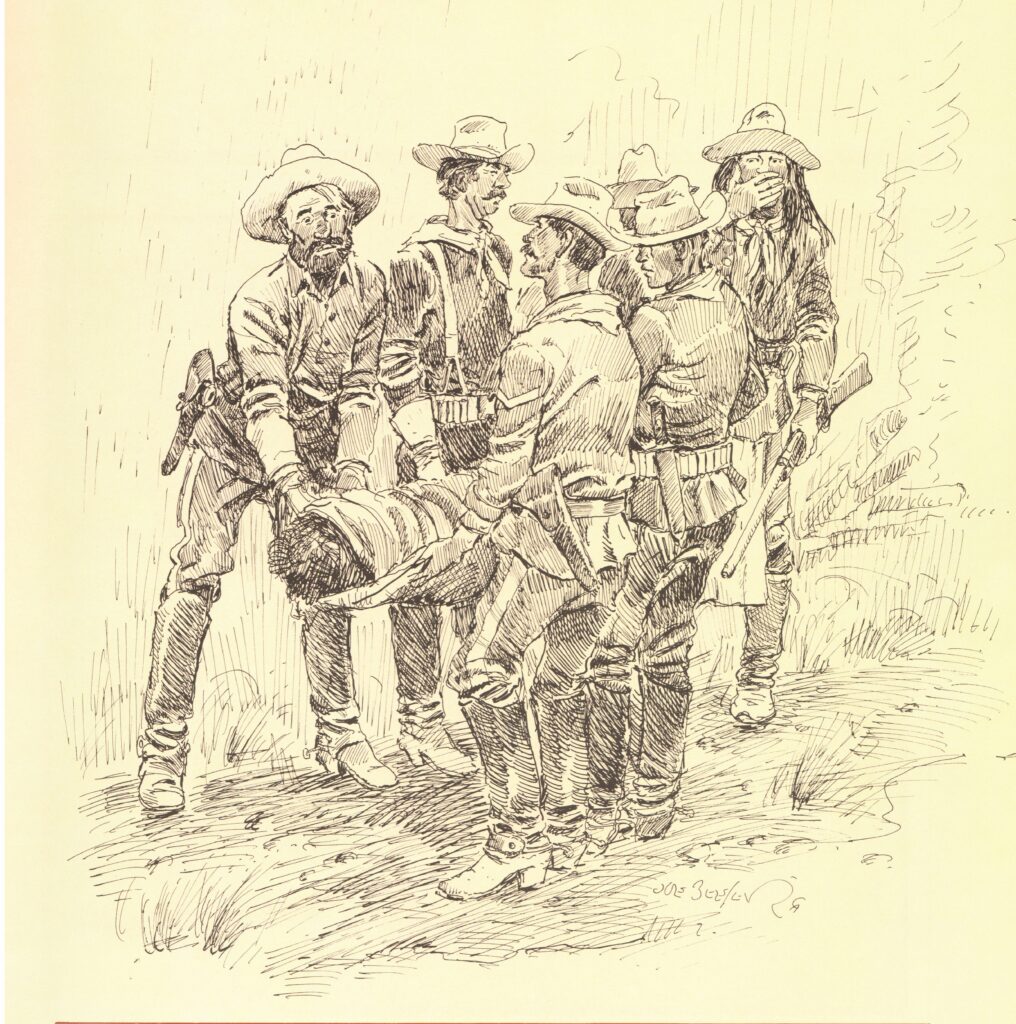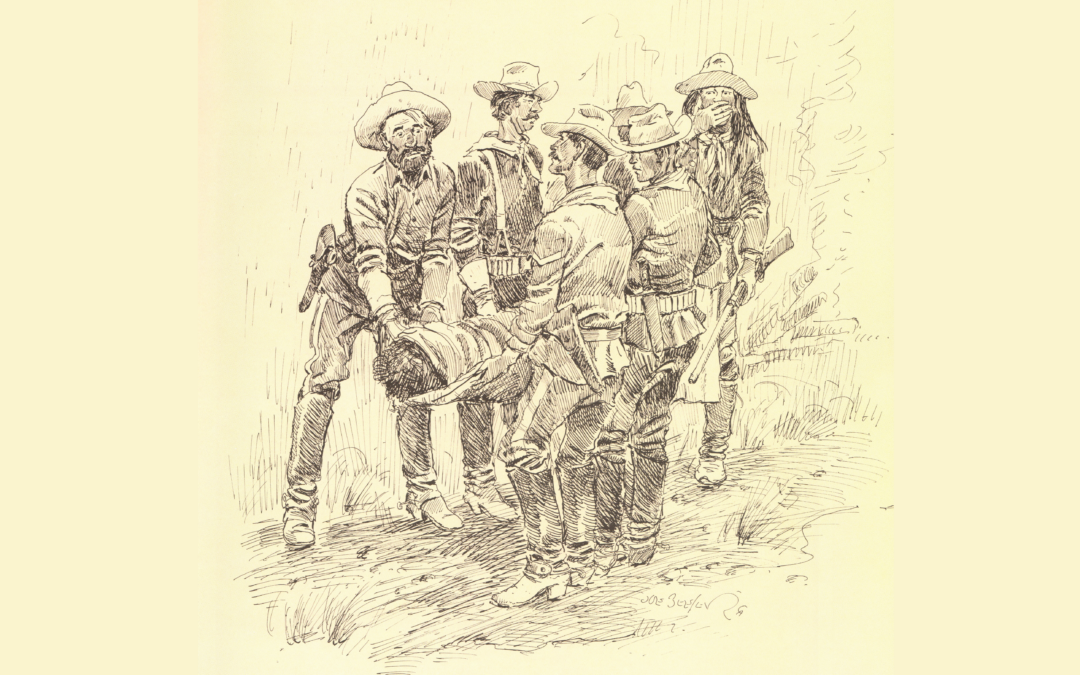
I’ll never forget sitting next to my mother at my father’s funeral. Dad was a carefree cowboy when he met my mother, a sixteen-year-old Irish girl living on a farm south of Tempe. Times were tough during those Depression years and when I was about six he sold the cows and hired out for the Santa Fe Railroad. He loved nothing more than riding the rails, staring out the window of those steam locomotives.
An old Southern Baptist preacher was delivering the eulogy and he went on and on about what a great husband, father, companion and provider my father was how he was such a good Christian man. After a few minutes of this my mother leaned over and said, “Marshall, go up there and look in the casket and see if that’s really your father in there. I think we’ve come to the wrong funeral.”
Since then every time I attend a funeral and listen to those words of praise for the deceased that story crosses my mind. I can’t help but think how nice it would be to have your funeral while you’re still alive.
I only know of one man who attended his own funeral—alive that is; Isadore Christopher, through a peculiar set of circumstances he was a live witness to his own funeral.
It all happened back in the summer of 1882 up in the Mogollon Rim country where Christopher had a small ranch located on the creek and near a mountain that would later bear his name.
But first let me take you back to that “peculiar set of circumstances.”
During the summer of 1881 in the community of Cibicue, lived an Apache prophet named Nock-ay-del-klinne, a slight–built man with a mystical nature who was mixing some of the white man’s religion with the Apache. He was particularly interested in the story of the resurrection of Jesus and began teaching his followers the new religion and forecasting the return of two dead war chiefs.
Nock-ay-del-klinne may have been under the influence of Geronimo and others and it wasn’t long until not only the reservation Apache were coming under his spell but the Apache scouts as well. It was reported that the dances were having a strange effect on the men. The religion was loosely-styled enough so that each could interpret it in his or her own manner. The militants saw it as warlike and the peaceful ones saw the so-called “mad medicine man” as a man of peace. The Army saw it as unruly and decided to do something about it.
On August 29th, General Eugene A. Carr left Fort Apache for Cibecue, some forty miles away, with some 150 soldiers and Apache scouts to arrest the prophet. While Nock-ay-del-klinne was being escorted back to Fort Apache a riot broke out. The usually trustworthy Apache Scouts rebelled and all but one deserted. During the skirmish the medicine man was killed along with several of Carr’s men.
The incident caused a lot of unrest on the reservation and over the next several months the Cibicue insurgents found a new leader by the name of Na-ti-o-tish, who’d managed to escape arrest during the uprising.
Located some ten miles north of Globe was the silver camp of McMillanville. The town was the result of a terrible hangover by a prospector named Charlie McMillan. After a night of partying in the rowdy Globe saloons Charlie had gotten so drunk he couldn’t hit the ground with his hat in five tries.
The next day he and his partner Dore Harris were riding north of town when Charlie slid out his saddle and fell to the ground in deep slumber.
While waiting for his partner to sober up, Dore began poking around with his prospector’s pick and struck a rich bonanza of silver that eventually paid out over a million dollars. They called it the “Million-Dollar Hangover.”
Now in keeping with the season let’s give this this story some Christmas flavor. The town grew to some 1,500 residents and in 1880, to celebrate Christmas the prosperous but rough and tumble residents decorated the town’s Christmas tree with cigars, dynamite sticks, fuses and whiskey bottles.
It was the following summer that Na-ti-o-tish and some fifty warriors headed towards McMillanville causing the terror-stricken residents to seek shelter in the Stonewall Jackson mine tunnel.
After wounding one man the Apache bypassed the town and headed towards Pleasant Valley.
Following in hot pursuit were the “Globe Rangers,” eleven men “well-primed with the best brand of whiskey and carrying an ample supply with them.”
At Middleton’s ranch they paused to take a siesta but failed to post guards. The Apache sneaked in midst the band of “barroom brawlers” and relieved them of their horses causing the rangers to take a sore-footed walk back to Globe.
While all this was going on Isador Christopher was keeping an eye on the cows at his ranch when he came upon a large bear. He shot the critter then hauled it back to the ranch, skinned the hide and dumped the carcass in a log shanty.
Later that day he rode out to gather some cattle and while he was away, Na-ti-o-tish and his band decided to pay a social call. Finding nobody at home, they set fire to Christopher’s humble abodes and rode off towards Houston Mesa where they would attack the Meadows ranch.
A troop of cavalry arrived at the ranch shortly after the Apaches had vamoosed. The soldiers inspected the smoldering ruins and found the cooked remains of that bear. They naturally figured it was pore ol’ Isadore Christopher and decided he needed a proper burial. A grave was hastily dug and funeral services were begun.
No doubt someone was singing the praises of Mr. Christopher when he casually rode in, quickly sized up the situation and informed the solemn party they were holding a funeral for the carcass of an old Rim Country bear.






